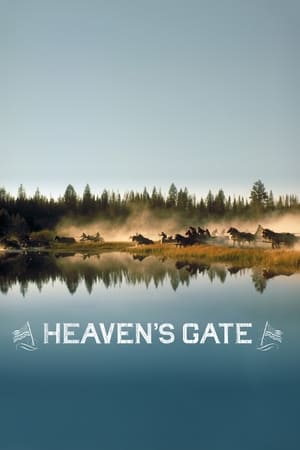
Heaven's Gate
***Cimino’s epic Western about the Johnson County War, unjustly lambasted by critics*** With the government’s blessing, cattle barons in Wyoming circa 1890 hire an army of mercenaries to kill claimed rustlers who, in many cases, are innocent settlers. A marshal born into wealth (Kris Kristofferson) sides with the poor immigrants in Johnson County; in his spare time he romances a French madam (Isabelle Huppert) who’s also pursued by a top enforcer of the stockmen (Christopher Walken). “Heaven’s Gate” (1980) is Michael Cimino’s notorious adult-oriented Western that brought down a studio. Cimino’s style is arty with a focus on mundane realism, similar to Francis Ford Coppola. I’m not a fan of Cimino’s previous film, the overrated “The Deer Hunter” (1978), because of the tedious opening hour and the disagreeable focus on Russian Roulette, although I love his Tarantino-like “Thunderbolt and Lightfoot” (1974). Cimino wisely doesn’t allow the Harvard graduation sequence that opens “Heaven’s Gate” to go on forever like the wedding in “Deer Hunter,” not to mention it has aesthetic merit. There are two versions of the film: The premiere New York City cut runs 3 hours, 39 minutes while the edited version that hit theaters five months later is a little over an hour shorter (roughly 2.5 hours). Critics complain that the story makes no sense, but it’s actually really simple with only a handful of main characters. I was never confused about what was happening and I viewed the shorter version. The locations and photography are top-of-the-line. Whether or not you appreciate the story will depend on if you favor Cimino’s arty, mature and realistic style. In any case, everything leads to an action-packed climax. When the movie was released there was a critical feeding frenzy, but much of the criticisms are disingenuous as critics conveniently jumped on the hate wagon. For instance, there’s the complaint that this is an ugly film due to an industrial pall, including dust and smoke. Actually, the visuals are awesome despite any dust, smoke or fog. Roger Ebert complained that a character in a burning cabin who is convinced that he’s going to die writes a note and signs his full name before breaking out and getting shot, but the real-life person in question kept a journal of his besieging and, in fact, signed it off before dying. Ebert also whined about a gunman breaking into a house and shooting three men who are raping a woman and yet she is unscathed. Actually the guy in question is a marshal by profession and therefore highly skilled at gunmanship. So what’s the problem? Yet another criticism is that the antagonists could’ve easily gotten to the attackers utilizing the armored wagon made of logs by going around or behind, but the settlers would’ve easily shot ’em down if they unwisely did this seeing as how they would’ve been out in the open. Aduh. The film was shot in Montana (Kalispell, Glacier National Park, Blackfeet Indian Reservation, etc.) with the Casper, Wyoming, sequence shot in Wallace, Idaho, and the Harvard segment filmed (obviously) in England. GRADE: B/B-
